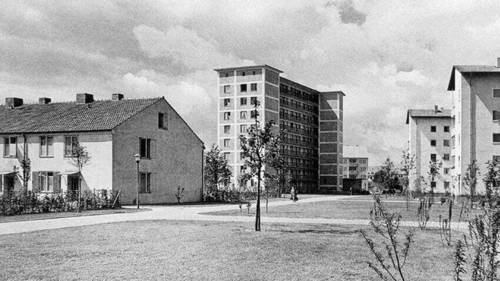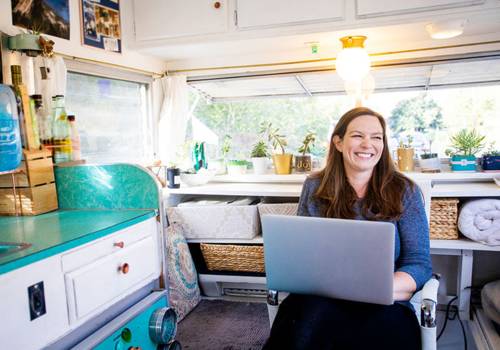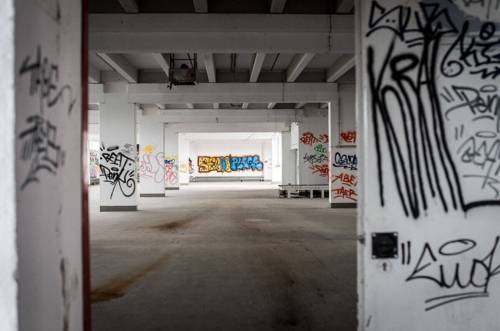Do you live in a small space? Hannover has been coming up with solutions for this for a long time. Model examples of small living spaces have been developed here since the 1950s. Increasing numbers of students and workers are now living in the city who need small and affordable apartments. Approximately 300 microapartments each measuring 24 to 33 square metres have therefore been developed. A great deal of thought has been devoted to the matter at Leibniz University. Scientists and students have been focusing on research into the “Habitats of the Future”, or specifically new ways of living in cities.
HAnNOVER YESTERDAY
During the Constructa International Building Exhibition in 1951, Hannover presented the Constructa apartment block on Hildesheimer Strasse. This development is primarily composed of two to five-storey apartment buildings which are able to accommodate as many people as possible in a relatively small space during times when accommodation is in short supply. During the 1950s, Hannover still bore the marks of the bombardments that occurred during the war. Furthermore, there was influx of refugees from the former eastern parts of Germany who needed places to live. There was an urgent need to reconstruct the city as quickly as possible. Under the direction of urban planner Rudolf Hillebrecht, the Constructa block was initially developed to serve as an illustrative model. 500 apartments were constructed on approximately 15,000 square metres of land.
HANnOVER TODAY
Hannover, a city of singles There is only one person living in more than half of all households in the city. Single people do not need as much space as a family, however, small and affordable apartments have so far been difficult to come by. A plan is in the making to construct microapartments in three locations in Hannover: small apartments with floor space of between 24 and 33 square metres with built-in kitchenettes. The “hanova” housing association is in charge of the project and has invested just under 13 million euros. enercity-Fonds proKlima Hannover is providing funding of 66,000 euro and the KfW Banking Group is also supporting the plan. 300 microapartments should therefore be ready by 2021. The first 113 apartments have been developed in Kopernikusstrasse 7B near to the university. The occupants moved into their apartments in the new five storey building in July 2018. In the next stage, hanova intends to build two further apartment blocks with around 200 apartments by the beginning of 2021 at Klagesmarkt 17 and on Körnerplatz. The apartments are primarily aimed at students, single people and commuters
HANNOVER TOMORROW
What will human living spaces of the future look like? Researchers and students at the Faculty of Architecture and Landscape Sciences at Leibniz University of Hannover are asking this very question. As the challenges of living closely together are becoming ever more difficult, especially in cities, the faculty is now focusing on research into the “Habitats of the Future”. Representatives from the faculties of architecture, urban planning, landscape architecture, environmental planning and technical education are working closely together. One of the projects entitled “Urban Voids” that is being developed by the Institute of Urban Planning and Design focuses on the unlocked potential of urban empty spaces – for example, these areas could be used as living space or in variable ways. The city of Hannover is being used as a case study.

 Deutsch
Deutsch
 English
English
 中文
中文
 Danish
Danish
 Eesti
Eesti
 Español
Español
 Suomi
Suomi
 Français
Français
 Italiano
Italiano
 日本語
日本語
 한국
한국
 Nederlands
Nederlands
 Norge
Norge
 Polski
Polski
 Portugues
Portugues
 Русский
Русский
 Svenska
Svenska
 Türkçe
Türkçe
 العربية
العربية
 Romanesc
Romanesc
 български
български
 © MADSACK Mediengruppe
© MADSACK Mediengruppe  © MADSACK Mediengruppe
© MADSACK Mediengruppe  © MADSACK Mediengruppe
© MADSACK Mediengruppe